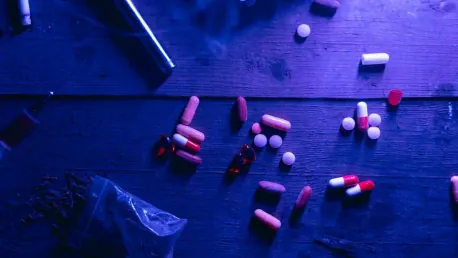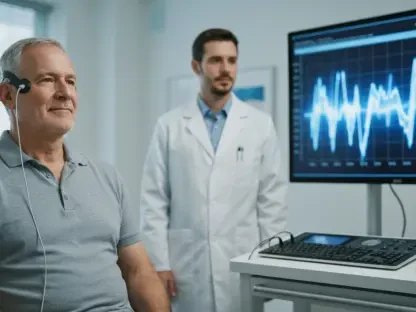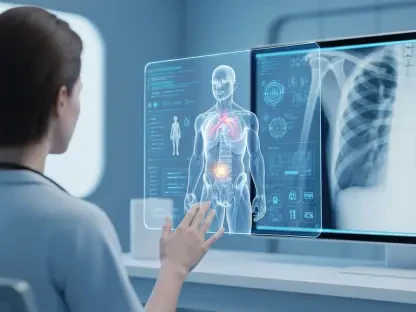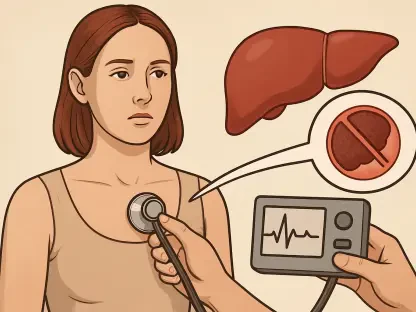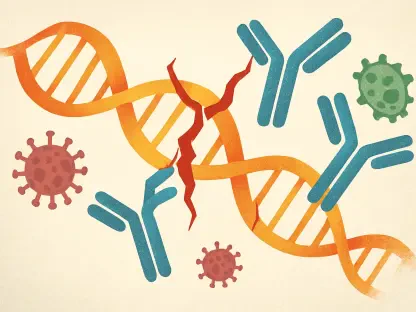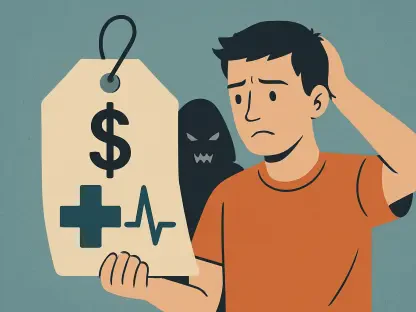Drug addiction has been a persistent issue throughout human history, documented from ancient times. Traditionally viewed as a moral failing rather than a treatable disease, the perception of addiction began to shift in the 20th century with scientific discoveries highlighting its basis in brain chemistry. Despite scientific advancements, stigma persists, hindering pharmaceutical development and regulatory approval for new treatments.
Historical Context and Stigma
Evolution of Perception
Drug addiction has long been stigmatized as a moral failing. This perception began to change in the 20th century with scientific discoveries that highlighted the role of brain chemistry in addiction. Understanding addiction as a brain disorder rather than a behavioral choice marked a significant shift in both scientific and public perceptions. This change has been instrumental in reshaping the approach to treating addiction by emphasizing its biological underpinnings rather than viewing it through a purely moralistic lens.
The acknowledgment of addiction as a medical condition has facilitated more informed discussions about its treatment. However, the remnants of the old mindset still linger. Public misunderstanding about the nature of addiction continues to influence funding for research, public policy, and the regulatory environment surrounding new treatments. Overcoming this stigma is paramount to ensuring that individuals struggling with addiction receive the care and support they need.
Impact of Stigma on Treatment Development
Despite advancements in understanding addiction, stigma continues to hinder the development of new treatments. Pharmaceutical companies are often reluctant to invest in addiction research due to the associated stigma, which also affects regulatory approval processes. Reducing stigma is essential for advancing effective treatments and ensuring addiction is treated with the same urgency as other medical conditions. Without a shift in perception, innovations in addiction treatment remain limited by societal attitudes rather than scientific potential.
The cycle of stigma also negatively impacts patient outcomes. Individuals battling addiction may avoid seeking help due to shame, fear of judgment, or concern about social repercussions. This avoidance further perpetuates the cycle of untreated addiction and hinders the potential for recovery. Addressing stigma on a societal level, through education and advocacy, is as crucial as any scientific breakthrough in the fight against addiction.
Scientific Advancements
Mechanisms of Addiction
Studies have revealed how drugs of abuse hijack the brain’s reward circuitry, making addiction a matter of altered brain function. Researchers have identified specific brain regions and circuits affected by addiction, primarily focusing on the nucleus accumbens and associated neural pathways. This understanding has paved the way for developing targeted treatments. The nucleus accumbens plays a central role in the reward system, and disruptions in its functioning are closely linked to addictive behaviors.
By mapping out the exact changes that substances cause in the brain, researchers have been able to develop treatment strategies that directly target these alterations. This strategy provides a more precise approach compared to traditional methods, which often treated addiction as a uniform issue without considering the underlying neurobiological variations among different substances. This nuanced understanding highlights the complexity of addiction and underscores the need for specialized interventions tailored to specific types of substance abuse.
Brain Regions and Circuits
The nucleus accumbens and its associated neural pathways play a crucial role in addiction. By understanding how these brain regions are affected by drugs, researchers can develop treatments that target these specific areas. This approach aims to modulate the brain’s reward circuitry without disrupting its essential functions. Such specificity promises to enhance treatment outcomes by focusing on the root cause of addiction at the neurological level.
This targeted approach contrasts sharply with earlier, less precise methods that often led to numerous side effects due to their broad impact on brain chemistry. By identifying and honing in on the critical areas affected by addictive substances, researchers hope to minimize adverse effects while maximizing therapeutic benefits. The ultimate goal is to restore normalcy to the brain’s reward circuits, thereby reducing cravings and preventing relapse.
Challenges in Drug Development for Addiction Treatment
Biological Challenges
Developing treatments for addiction is complicated by the fact that drugs of abuse target crucial brain circuits involved in survival and reward. Modulating these circuits without disrupting their essential functions presents unique biological challenges. Researchers must find ways to balance treatment efficacy with minimal side effects. The complexity of these circuits and their integration with fundamental life-sustaining processes make this balancing act particularly difficult.
For instance, the pathways involved in addiction often overlap with those regulating mood, motivation, and basic survival instincts. Any treatment that alters these pathways must be delicately tuned to avoid undesired behavioral or physiological consequences. This complexity necessitates a multifaceted approach that considers the broader implications of manipulating specific brain regions. It also demands ongoing research to refine and optimize therapeutic strategies continually.
Limited Investment and Regulatory Hurdles
The stigma around drug addiction deters pharmaceutical companies from investing in addiction research. Additionally, the existing regulatory framework is not entirely suitable for the approval of new addiction treatments. More flexible and nuanced criteria are needed to reflect the chronic and relapsing nature of addiction. Current regulations often require demonstration of complete abstinence, which may not be a realistic or appropriate measure of success for all individuals.
This rigid regulatory environment stifles innovation by setting unattainable benchmarks that fail to account for the full spectrum of addiction recovery. A more holistic approach, considering both reductions in use and improvements in quality of life, could incentivize investment and accelerate development. Reforming these standards to recognize partial success could open the door for new treatments that provide incremental, yet meaningful, benefits in the journey towards full recovery.
Current Treatment Landscape and Gaps
Existing Pharmacological Treatments
Currently, limited pharmacological treatments exist for opioids, nicotine, and alcohol. However, there are no FDA-approved treatments for addictions to cannabis, polysubstance use, or stimulants like cocaine and methamphetamine. This gap highlights the need for continued research and development in addiction treatment. The diverse nature of addictive substances means that a one-size-fits-all approach is insufficient, necessitating the development of specialized interventions suited to each type of addiction.
The shortcomings in current pharmacological treatments indicate that the field still has considerable room for growth. While maintenance therapies and emergency interventions have provided some relief for certain types of addiction, their scope remains limited. The next wave of treatment development must address these gaps, pushing the boundaries of what is currently possible to offer more comprehensive and effective solutions for all forms of addiction.
Emergency Interventions
While emergency treatments like naloxone exist for opioid overdoses, there are no equivalent interventions for stimulant overdose reversals. This lack of emergency treatments for other substances underscores the need for comprehensive approaches to addiction treatment. Naloxone’s success in saving lives during opioid overdoses highlights the potential impact that such immediate interventions could have if developed for other substances like methamphetamines or cocaine.
Emergency interventions serve as critical lifelines, providing an immediate response during crises. Their absence for certain substances means that individuals affected by those drugs are at greater risk of mortality in the event of an overdose. Research focused on developing such life-saving measures is crucial. Effective emergency treatments not only protect lives but also offer a crucial window for engaging individuals in longer-term recovery efforts, bridging the gap between crisis intervention and sustained treatment.
Promising New Treatments in Development
Gene Therapy and Enzyme Engineering
Researchers at the Mayo Clinic have engineered a highly active form of the butyrylcholinesterase enzyme to rapidly degrade cocaine in the bloodstream, preventing it from reaching the brain. Using a gene transfer approach, they introduce mutations into liver cells to ensure sustained enzyme production, protecting against relapse. By degrading cocaine before it exerts its psychoactive effects, this therapy aims to break the cycle of addiction at its most fundamental level.
This innovative strategy exemplifies the potential of gene therapy in addiction treatment. The long-lasting effects offered by sustained enzyme production could provide continuous protection against relapse, addressing one of the key challenges in addiction treatment. This approach not only exemplifies scientific ingenuity but also represents a potential game-changer in how addiction can be managed, moving towards more permanent solutions.
Epigenetic Editing
Eric Nestler’s team at Mount Sinai and Elizabeth Heller’s group at the University of Pennsylvania are targeting epigenetic changes induced by drugs of abuse. They are exploring transcription factors like RXRα and epigenetic editing techniques to alter gene expression patterns associated with addiction, aiming to maintain abstinence and prevent relapse. Epigenetic modifications induced by chronic drug use can create lasting changes in gene expression that reinforce addictive behaviors.
By reversing these modifications, researchers hope to restore normal gene function, thereby reducing cravings and promoting sustained abstinence. This approach highlights the importance of addressing the long-term biological impact of addiction beyond its immediate neurochemical effects. Epigenetic editing could offer a way to reprogram the brain’s response to addictive substances, providing a more durable solution that addresses the root causes of the disorder.
Cannabinoid Receptor Modulation
Aelis Farma, led by Pier Vincenzo Piazza, is developing CB1-specific inhibitors (CB1-SSi) that mimic the brain’s natural response to high THC levels by modulating rather than completely blocking CB1 receptors. Their drug, AEF0117, has shown promise in reducing cannabis use without severe side effects in early trials. This strategy represents a refined approach to cannabinoid receptor modulation, aiming to mitigate the effects of cannabis addiction while minimizing unintended consequences.
Complete blockade of CB1 receptors often leads to undesirable psychological and physiological side effects. By modulating these receptors instead, AEF0117 offers a more balanced intervention that curtails the addictive properties of THC without disrupting other essential functions of the CB1 receptors. This nuanced approach could significantly improve the safety and efficacy of treatments for cannabis use disorder, marking a new era in cannabinoid research.
Immunotherapy and Vaccines
Kim Janda’s team at Scripps Research is working on vaccines that elicit an immune response against drugs of abuse, preventing them from reaching the brain. Additionally, they are developing monoclonal antibodies that provide immediate protection while vaccines take effect. This dual approach aims to offer both short-term and long-term solutions for addiction treatment. Immunotherapy represents a novel strategy, leveraging the body’s own defenses to combat addiction.
By neutralizing drugs before they can exert their psychoactive effects, these treatments offer a proactive method to prevent relapse. The development of vaccines and monoclonal antibodies could provide a significant advancement in addiction treatment, especially for substances like methamphetamine and cannabinoids, for which current treatment options are limited. This innovative approach underscores the potential of harnessing the immune system to combat addiction in fundamentally new ways.
Metabotropic Glutamate Receptor (mGlu) Modulators
Nicholas Cosford and Douglas Sheffler at Sanford Burnham Prebys Medical Discovery Institute are developing molecules targeting mGlu2 and mGlu3 receptors to prevent relapse in stimulant and polysubstance use disorders. They face challenges in navigating the regulatory pathway for new addiction treatments due to a lack of precedent. The metabotropic glutamate receptor system plays a critical role in modulating synaptic transmission and plasticity, which are key factors in addiction and relapse.
By targeting these receptors, researchers hope to modulate the neural circuits involved in craving and relapse without the broad effects associated with other treatment strategies. However, the novel nature of this approach means that regulatory bodies require new frameworks to assess its safety and efficacy. Continuous engagement with these bodies is essential to pave the way for regulatory approval and to establish precedents for future innovations in addiction treatment.
Repurposing Existing Medications
Repurposing existing medications offers a practical approach to developing new addiction treatments. By identifying drugs already approved for other conditions that have potential therapeutic effects on addiction, researchers can bypass some of the lengthy and costly stages of drug development. This approach can accelerate the availability of new treatments and provide immediate relief for those struggling with addiction.
Drug addiction has troubled humanity for centuries, with records of substance abuse appearing in ancient texts. Historically, addiction was seen as a moral failure rather than a condition that could be treated. However, perspectives began to change in the 20th century as scientific research uncovered the brain chemistry aspects of addiction. This shift helped to frame addiction as a disease rather than a character flaw.
Despite these advancements, a significant stigma around drug addiction remains. This stigma not only affects individuals struggling with addiction but also hampers the progress of pharmaceutical research and development. Many promising treatments face delays or rejections during the regulatory approval process due to the negative perceptions linked to addiction.
The lingering stigma complicates efforts to address addiction more effectively. It’s crucial to continue changing public perceptions and reduce the stigma to improve treatment options. Addressing these challenges requires a multi-faceted approach that includes education, advocacy, and continued scientific research. As our understanding of brain chemistry and addiction evolves, the hope is to provide more comprehensive care and ultimately diminish the negative stereotypes that have long plagued addiction treatment.
